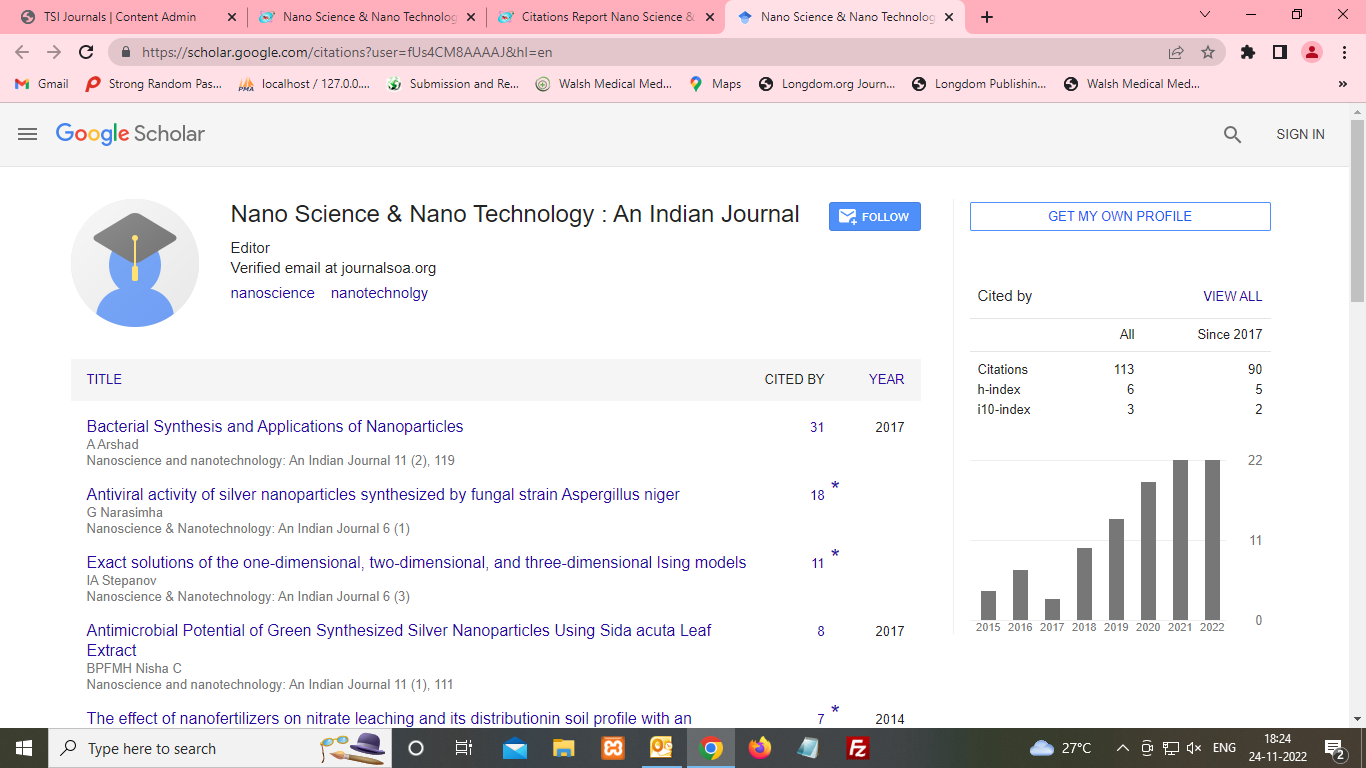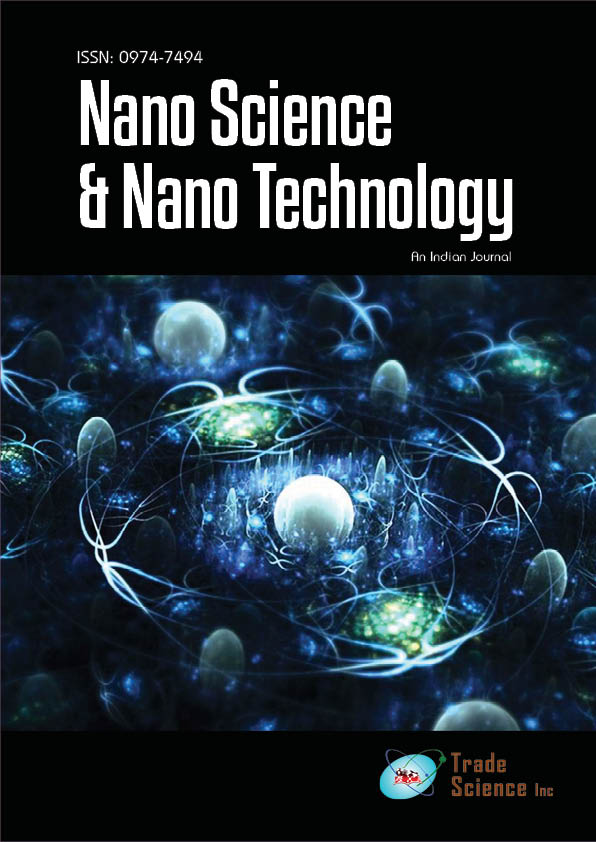Abstract
Comparative studies on biosynthesis, partial characterization of silver nanoparticles and antimicrobial activities in some edible mushroom
Author(s): M.Shivashankar, B.Premkumari, N.ChandanMicrobial silver nanoparticles have been known to have bactericidal effects but the antimicrobial mechanism have not been clearly revealed. The use of microorganisms in the synthesis of nanoparticles emerges as an ecofriendly approach. The biological process with the ability to study the shape of particles produced would therefore be a lime light of modern nanotechnology. In the present study biosynthesis of silver nanoparticles using edible mushroomsViz., Pleurotusfloridaand Pleurotusflabellatus, partial characterization of silver nanoparticle and its antimicrobial study have been reported. It was found that aqueous silver ions of 5mM concentration were reduced to silver metal nanoparticles by nitrate dependent reductase and a shuttle quinone extracellular process when treated with fungal supernatant ofPleurotusflorida, in 72hrs and Pleurotusflabellatus in 24hrs. Partial characterization of synthesized silver nanoparticles, investigated by UV-VIS Spectroscopyshowed increased productivity at 386nm with sharp and intense surface plasmon. It is found that silver nanoparticles are bound to protein through carboxylate group of aminoacidresidues. The synthesized silver nanoparticle showed high bactericidal activity against Gram-positive (Staphylococcus aureus) and Gram-negative (Pseudomonas aeruginosa) bacteria. Themechanismof the Ag NP bactericidal activity is discussed in terms ofAg NP interaction with the cellmembranes of bacteria.

